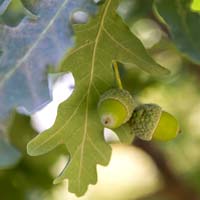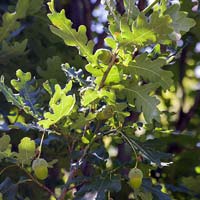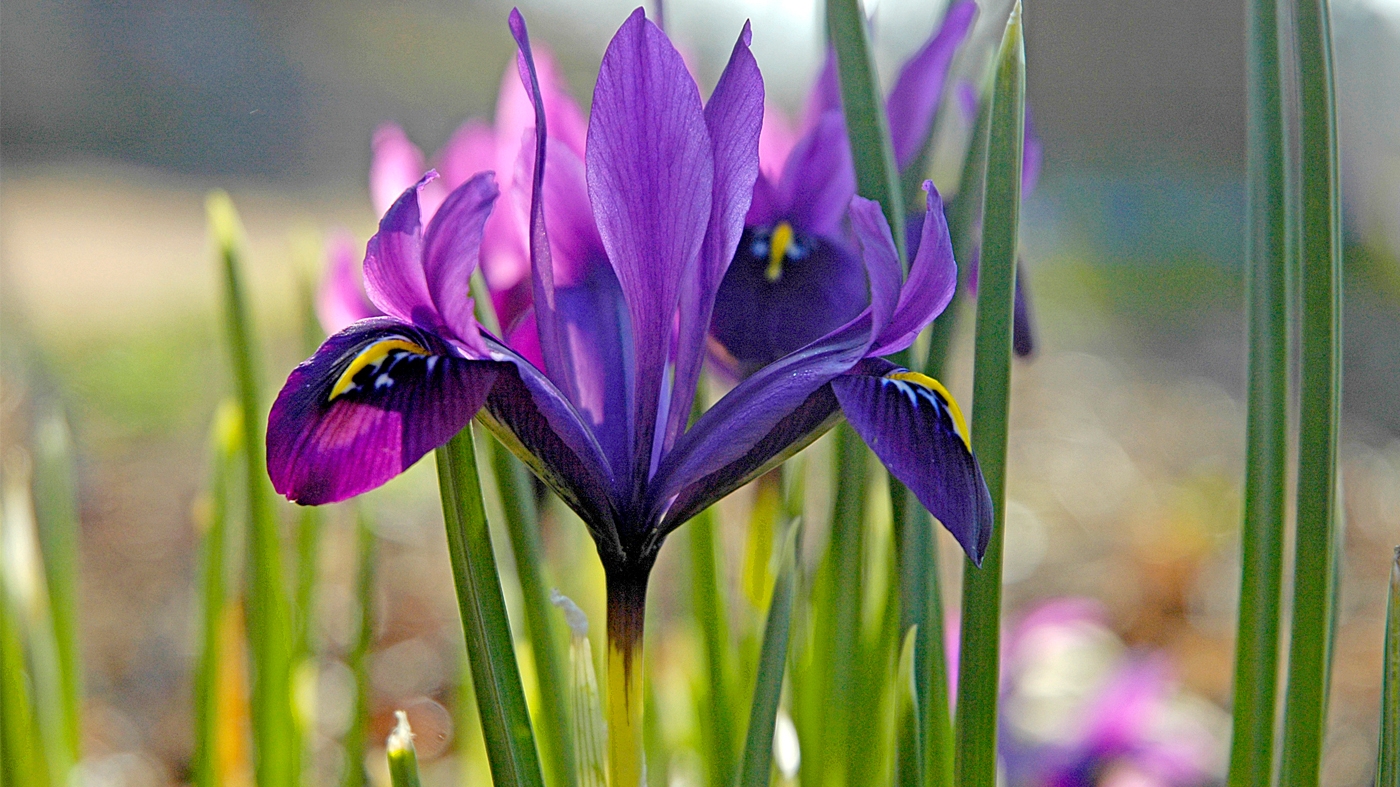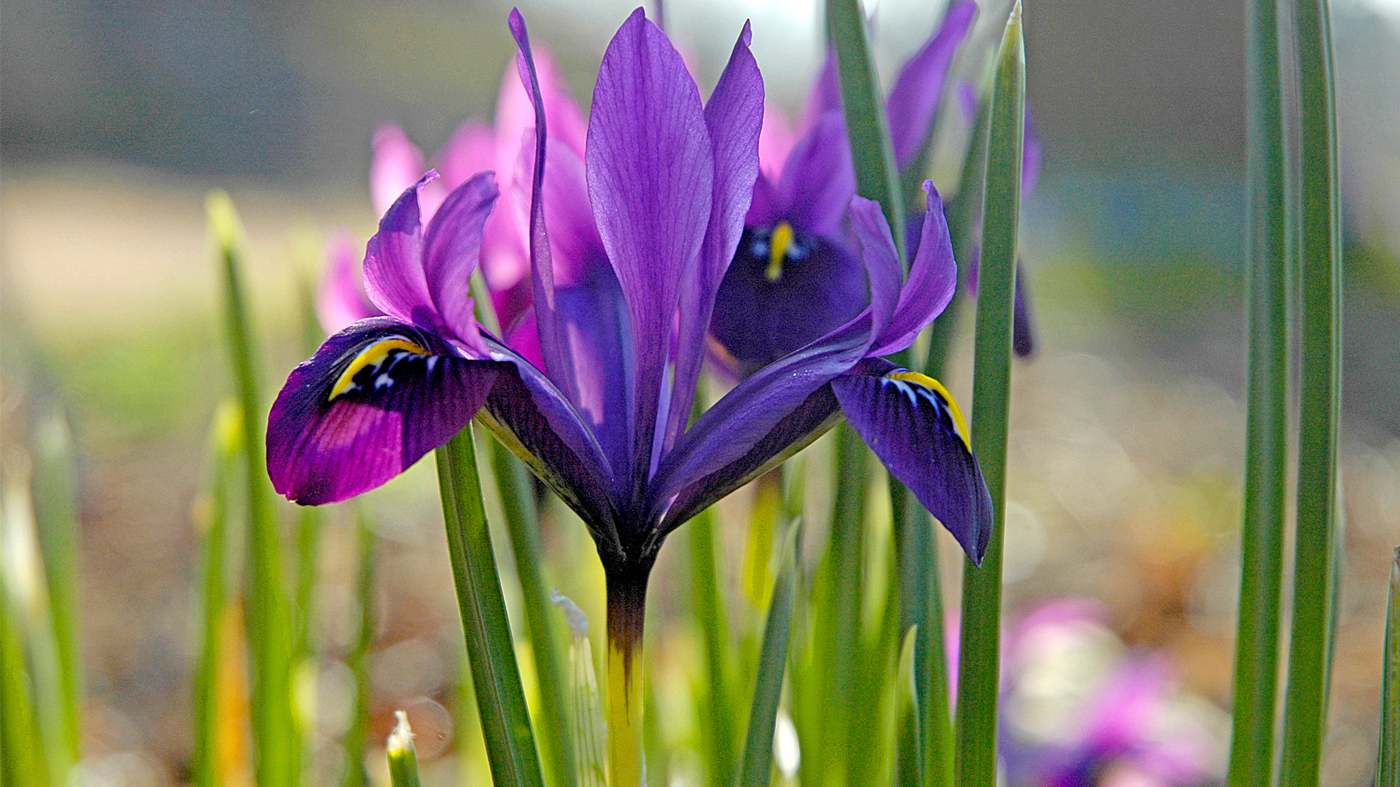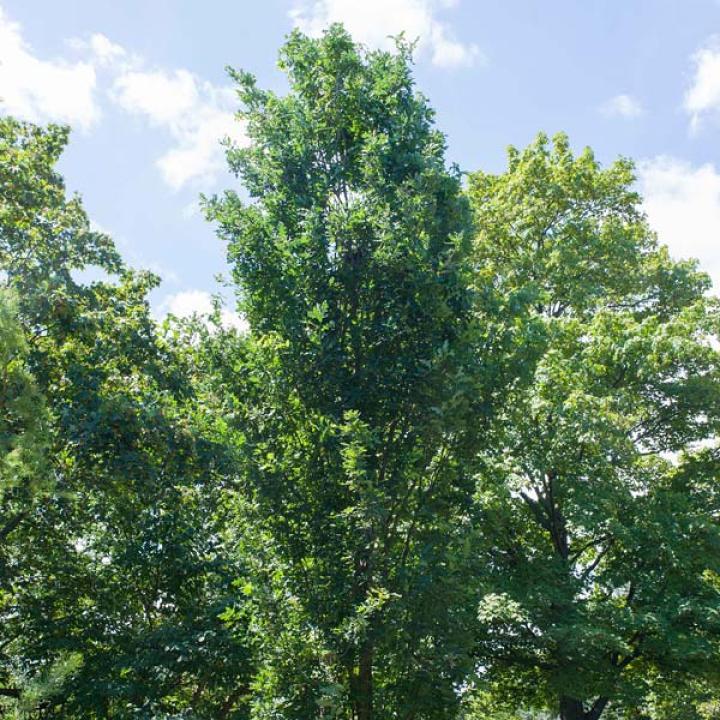
Fastigiate English oak (Quercus robur 'Fastigiata')
The fastigiate English oak is a columnar form of this species, which is popular in Europe. It has been widely planted in North America since the 1600s. It is a large, majestic, deciduous oak of the white oak group that typically grows in cultivation to 40–70 feet tall with a broad-spreading, rounded crown. Trunks are typically short, with ridged and furrowed dark gray to black bark. Acorns are an important source of food for wildlife. Short-stalked, dark green leaves (3–5 inches long) with 3–7 blunt lobes per side are blue-green beneath. Upswept branches bearing dark green leaves typically spread no more than 10 to 15 feet at maturity, making this a useful tree for tight spaces. English oak is very adaptable and suitable for urban planting but should be sited in full sun to reduce the occurence of mildew.
